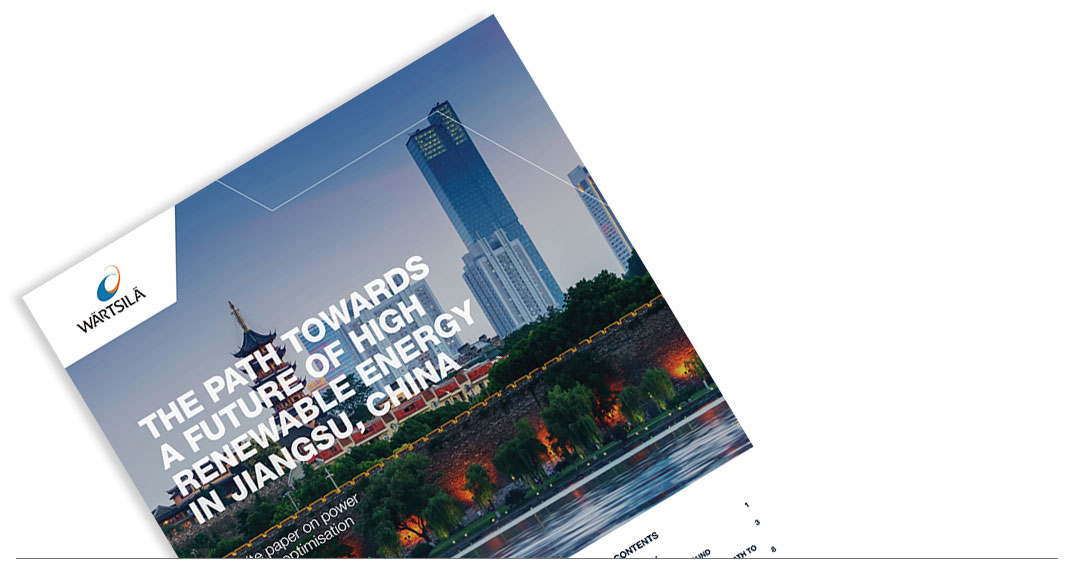

The path towards a future of high renewable energy in Jiangsu, China
Jiangsu province in China has been at the forefront of the energy transition in recent years. Jiangsu’s energy authority issued “Guidelines for Jiangsu Province to Improve the Regulation Capacity of the Power System”, which proposes taking comprehensive measures to improve flexibility and adaptability in order to achieve safe, efficient, clean and low-carbon development of the power system.
Based on bilateral energy cooperation between China and Finland, Wärtsilä and the Energy Power Planning & Engineering Institute (EPPEI) jointly launched the study project “Enhancing Power System Flexibility: Finnish Experience and Application in Jiangsu”. This study aims to identify the optimal path towards more renewable energy sources (RES) for Jiangsu by improving its power system flexibility. It considers three scenarios – baseline, moderate RES and high RES – and shows how the optimal path to more renewables can help lower system costs while maintaining system reliability.
In order to achieve this, flexible gas-based capacity is needed to integrate renewables and provide peak regulation. This capacity includes multiple power solutions such as efficient and flexible gas-based internal combustion engine (ICE) power plants as well as battery energy storage.
In particular, the fast ramp-up and ramp-down rates of high-efficiency ICE power plants allow the system to meet the need for short-term rapid response when integrating renewables.
Contents
- Summary
- Market background
- Modelling the optimal path to sustainable power systems
- Power system modelling results
- Recommendations and benefits
- Conclusion

